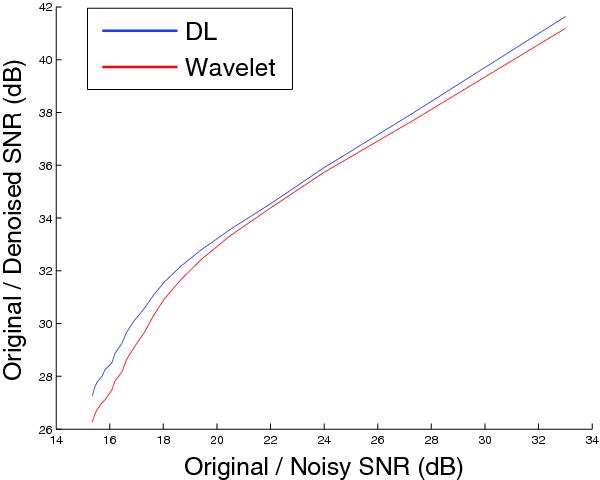Fig. 7

Benchmark comparing the wavelet shrinkage algorithm to the dictionary learning denoising algorithm when dealing with various noise levels, using the dictionary from Fig. 5. Each experiment is repeated 100 times and the results are averaged. We use the maximum value for the patch-overlaping parameter. The sparse coding uses OMP and is set to reach an error margin  where σ is the noise standard deviation and C is a gain factor set to 1.15. The wavelet algorithm uses five scales of undecimated bi-orthogonal wavelets, with three bands per scale. The red and blue lines correspond to wavelet and learned dictionary denoising. The horizontal axis is the peak S/N between the noised and the source images, and the horizontal axe is the peak S/N between the denoised and the source images.
where σ is the noise standard deviation and C is a gain factor set to 1.15. The wavelet algorithm uses five scales of undecimated bi-orthogonal wavelets, with three bands per scale. The red and blue lines correspond to wavelet and learned dictionary denoising. The horizontal axis is the peak S/N between the noised and the source images, and the horizontal axe is the peak S/N between the denoised and the source images.
Current usage metrics show cumulative count of Article Views (full-text article views including HTML views, PDF and ePub downloads, according to the available data) and Abstracts Views on Vision4Press platform.
Data correspond to usage on the plateform after 2015. The current usage metrics is available 48-96 hours after online publication and is updated daily on week days.
Initial download of the metrics may take a while.


